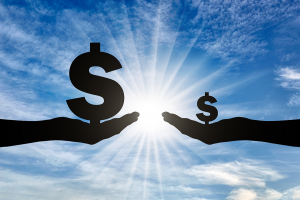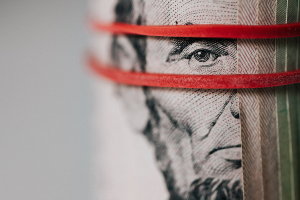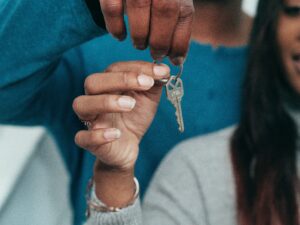Understanding the Racial Wealth Gap in America

Should You Fix or Ditch Your Credit Score?
07/13/2022
How to Build Credit for a Home Purchase
07/22/2022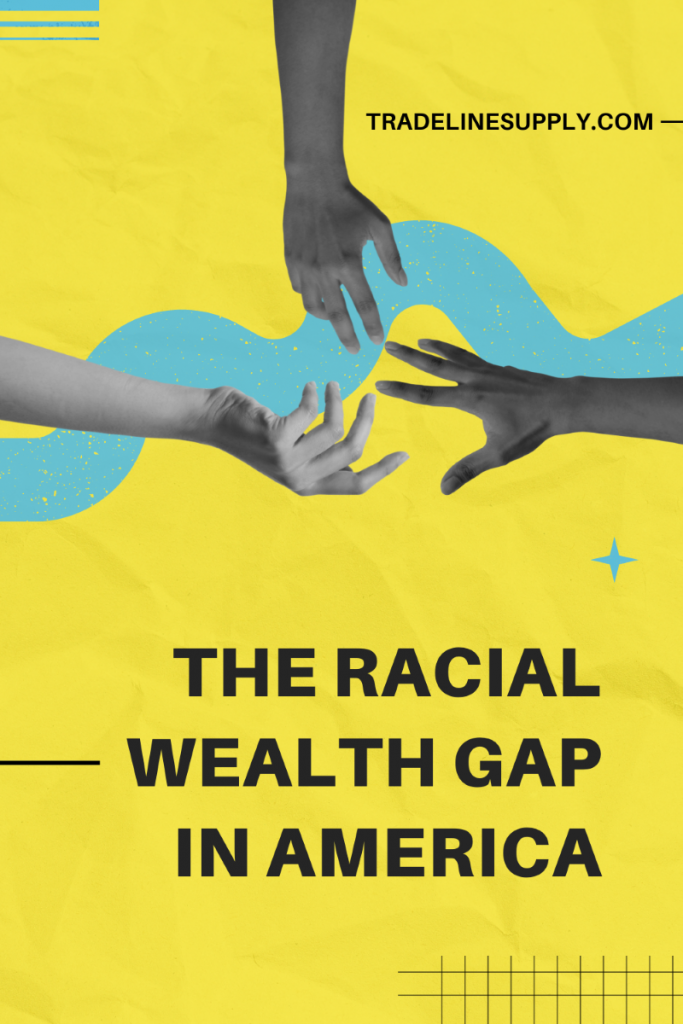 Understanding the racial wealth gap in America is crucial to taking steps to make a more equitable economy. Since the COVID-19 pandemic changed the fabric of American working society, now is a great time to be addressing systemic problems like racial and economic inequality. Especially since the people of color were disproportionately affected by job loss, wage cuts, and other pressures that caused them to step away from the workforce.
Understanding the racial wealth gap in America is crucial to taking steps to make a more equitable economy. Since the COVID-19 pandemic changed the fabric of American working society, now is a great time to be addressing systemic problems like racial and economic inequality. Especially since the people of color were disproportionately affected by job loss, wage cuts, and other pressures that caused them to step away from the workforce.
More and more companies are looking into how they pay their employees of color. And since the racial unrest of 2020, progressive advocates have been pushing for more equal pay bills. Currently, Colorado, California, Washington, and Maryland have enacted state wage transparency laws to help minimize the wage gap. And Indiana, Virginia, South Carolina, New Jersey, and Massachusetts have proposed bills.
What Is the Racial Wealth Gap?
The racial wealth gap is the stark difference in wealth held by Black, Hispanic, and White households in the United States. According to the Feds, Black and Hispanic families make approximately half of what White families make. And they amassed between 15%-20% of the wealth that White families have.
When they broke down the demographics of their survey from 2019, the Feds found that White households held 86.8% of the wealth but accounted for only 68.1% of the population. On the other hand, Black and Hispanic communities held 2.9 and 2.8% of the wealth, respectively, but were 15.6% and 10.9% of the US population, respectively.
Employment Opportunities Affect the Racial Wage Gap
This gap affects every aspect of American life for Black and Hispanic communities. Black and Hispanic members of society are more likely to work in lower-paying jobs than their White counterparts. And even accounting for education, they still make less money overall than those with the same degree and occupation.
Less Access to Credit
On top of the wealth gap and employment gap hindering financial equality for the Black and Hispanic communities, they have less access to equal credit opportunity. A study recently conducted said that 40% of low-income communities’ first mark of credit is negative reporting. This affects their ability to find good jobs, better housing, and financing—all tools for wealth building.
Why the Racial Wealth Gap Matters
Ignoring the racial wealth gap harms communities of color. Our job as advocates is to understand what the wealth gap is and why it matters.
Having Wealth Helps You Weather Recessions and Pandemics
Wealth is one of the key indicators of whether or not you can weather a recession or other setbacks well. Wealth is a safety net between you and life’s uncertainties. The more that you’re able to store up before a tragedy will help you in the long term.
If you suddenly lose your job, you’ll want to have funds to fall back on. Just because your unemployment ended doesn’t mean your bills suddenly cease. You still need to pay for your mortgage, car payments, and any other bills that you have.
Since Black people don’t have the same access to wealth-building vehicles as White people, they’re more at risk when pandemics and recessions hit.
Having Wealth Helps you Build Better Credit Scores
Indirectly, having wealth helps you build a better credit score. You’re able to make your payments on time, and borrow appropriate money. If you come from a family with wealth, your first interactions with credit are more likely to be positive. You’re borrowing money because it’s the smart thing to do in this situation and not because it’s a necessity.
Because of this, 54% of the Black community has a score of 620 or lower, or they are credit invisible, which means they have no score at all. Over half of Black Americans are living paycheck to paycheck; it’s easy to miss a payment if there’s an emergency or overuse credit cards. Both lead to lower credit scores.
Good credit scores are important because they help you get cell phones without prepaying your account, allow you to get utilities without having to put down a deposit, allow you to rent a home, save money on insurance, and get approved for larger loans.
Having Wealth Puts You in Prime Financial Product Territory
When you have wealth and a good credit score, you have access to much better financial products. Things like credit cards with no fees and travel rewards. They’re straightforward and their terms and conditions are easy to use.
However, Athena Valentine Lent of Money Smart Latina pointed out to me that communities of color have often been barred from these products due to their credit invisible or bad credit status. instead, they only have options of predatory lenders. These lenders offer complicated, high-fee loans with terms and conditions unfavorable and confusing to the one seeking the loan. They’re meant to be impossible to get out of.
Not only that, but Valentine Lent talked about the housing crisis among communities of color. Because they have been red-lined for so long, when they should have been developing multigenerational wealth, they were unable to do so. Communities of color were only allowed to borrow mortgages at higher rates and in neighborhoods that were deemed less valuable by lenders and the government. Her opinion is that this practice left behind a continuing legacy of higher crime and an inability to build wealth in neighborhoods of color.
While these practices have been outlawed, racism still persists and people of color don’t have access to the same mortgage funding as White people.
Which Way Is the Racial Wealth Gap Going?
Unfortunately, the wealth gap is expanding instead of shrinking. With more access to opportunities, you would think that it would be the opposite. Instead, these opportunities are concentrated by White populations. Black and Hispanic communities who have the same education are paid 20%-30% less than their White coworkers. Additionally, the instability in the labor market more negatively affects people of color than it does the White community.
In a study by the Insititute on Assets and Social Policy, researchers reviewed 1700 different Black and White families. They found that home ownership, inheritances, and an increase in education contributed to a wealth gap in communities of color and White populations. And the increase was not small. From 1984 to 2009, the wealth gap between Black and White families widened from $85,000 to $236,000. And as of 2018, Black Americans had only 10% of the wealth that White Americans had.
What Contributes to the Wealth Gap?
This is different than the narrative that is commonly expressed in the personal finance community. We often think that personal behavior is to blame for not rising out of poverty and into financial equity. However, since it’s hard to be upwardly mobile in classes, personal responsibility is not as much to blame as policy. According to Institutes on Assets and Social Policy, “the evidence [for shrinking the racial wealth divide] points to policy and the configuration of both opportunities and barriers in workplaces, schools, and communities.”
Things that we think of as normal, low wages, job interviews, and resumes are all things that negatively affect the racial wealth gap. In order to work to close the gap, we need to focus on increasing wages and reforming hiring practices.
While it might not seem like a big deal, people with ethnic names are more likely to be screened out of the interview process due to racial bias. This prevents qualified people of color from being brought on to higher-paying roles and contributes to the wealth gap.
Is There a Racial Wealth Gap in Credit?
Unfortunately, the racial wealth gap is extended into the credit industry. Wealth can indirectly help you build credit, whereas those without wealth have a harder time making ends meet and this affects their creditworthiness.
Instead, they may rely on credit to bridge gaps in employment, emergencies, and other negative life situations. 1 in 5 Black consumers and 1 in 9 Hispanic consumers have FICO scores lower than 620. And a larger portion of Black and Hispanic Americans are credit invisible as well. On top of this, residents of Black and Hispanic neighborhoods tend to have more errors on their reports than residents of White neighborhoods.
The credit reporting system is not perfect because it does not take into consideration the implicit racial bias that is in America when looking at different ways to accumulate credit. This is especially frustrating when credit is used to determine things like rental housing, jobs, and utility bills. And it’s easy to tank your credit, but it’s a lot harder to build or rebuild your credit.
Tradelines
While many Americans have authorized user tradelines in their credit profiles, Black and Hispanic consumers are less likely to have these types of tradelines than White consumers. We help to reduce the inequality in our credit system by providing the opportunity for all consumers to have access to authorized user tradelines, not just the privileged.
Find out more about how tradelines provide equal credit opportunity.
Economic Growth From Closing the Racial Wealth Gap
The racial wealth gap is actually harming the economy. A study done by McKinsey in 2019 said that if we eradicate the gap, we would add between $1 trillion and $1.5 trillion back into the economy by 2028. To put that in perspective, that’s 4%-6% of the estimated GDP.
Ways We Can Close the Gap
Closing the wage gap is crucial to helping the economy. There are several factors that can help, although they will not close the gap by themselves.
Housing
One of the biggest ways we can close the gap is to focus on Black and Hispanic homeownership. Owning a home is a great way to give generational wealth to families. And this isn’t a small deal. Only about 40% of Black Americans own homes compared to the 74% of White homeowners.
Unfortunately, due to redlining, Black homeowners have been locked out of desirable socioeconomic housing developments. Working to ensure policies prohibit redlining, and encouraging revitalization projects in red-lined areas can help increase Black wealth.
Another problem that Black families have is that they’re up against predatory lenders and higher mortgage rates because of racism and perpetuating beliefs about the way Black people handle money.
All of this means that Black and Hispanic Americans don’t have the same access to wealth-building machines as White Americans do, and that widens the racial wealth gap.
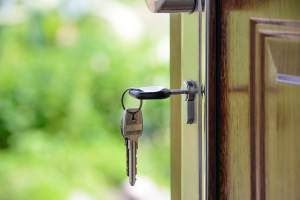
Education and Employment
While many people tout education as the way out of poverty, and for many people it is, Black families with a college education have a higher net worth than those without a college degree. But education itself does not help close the racial wealth divide.
On the contrary, the average net worth of a Black American with a college degree has fallen by 82% over the last three decades from $50,000 to $8,000. And furthermore, the average Black family who had a college education made less than a White family who only has a high school education.
Not only that, but Black students are saddled with more student loan debt than White, Hispanic, and Asian students and are less able to pay off the debt due to income inequality and massive student loan bills.
Access to better jobs is another crucial factor in closing the wealth gap. In order to fix the problems in education and employment, we need to focus on pay transparency and enacting policies that help equitably employ people of color.
Distinguished Racial Wealth Gap Organizations
One of the ways to stop the racial wealth divide from widening is to focus on organizations that are doing amazing things in this space.
Prosperity Now is an organization that has a Racial Wealth Divide Initiative. They focus on connecting with national organizations to create a community of people focused on shrinking the wealth divide. They focus on technical assistance, policy development, and advocacy, as well as applied research. And they use three primary strategies to accomplish this work:
- Analyzing asset poverty to see where the large gaps are in communities of color
- Launching specific projects targeted at best practices for wealth building
- Advocating for Prosperity Now on a local, state, and national level
Inequality.org is a large nonprofit that deals with inequality on a large scale. They tackle issues surrounding all forms of inequality, including racial equality. They write books and research and do community engagement work to ensure that their cause is being championed in their sphere of influence.
How Can We Shrink the Racial Wealth Gap in America?
We can shrink the racial wealth gap in America by raising the minimum wages. Since Black and Hispanic people disproportionally make up low-wage jobs in America, increasing their earnings will allow them to earn more. Higher earnings directly allow them to have a higher quality of life. They can save for things like a house, or a better car, and put aside money for retirement.
We can also advocate for 401(k) plans at part-time, minimum wage jobs. Saving for retirement is a huge way to help those with little earnings build generational wealth.
In addition, better financial education in schools could help prepare the next generation for financial success.
Other promising proposals to address racial wealth inequality include baby bonds, more equitable homeownership incentives, and guaranteed minimum income.


